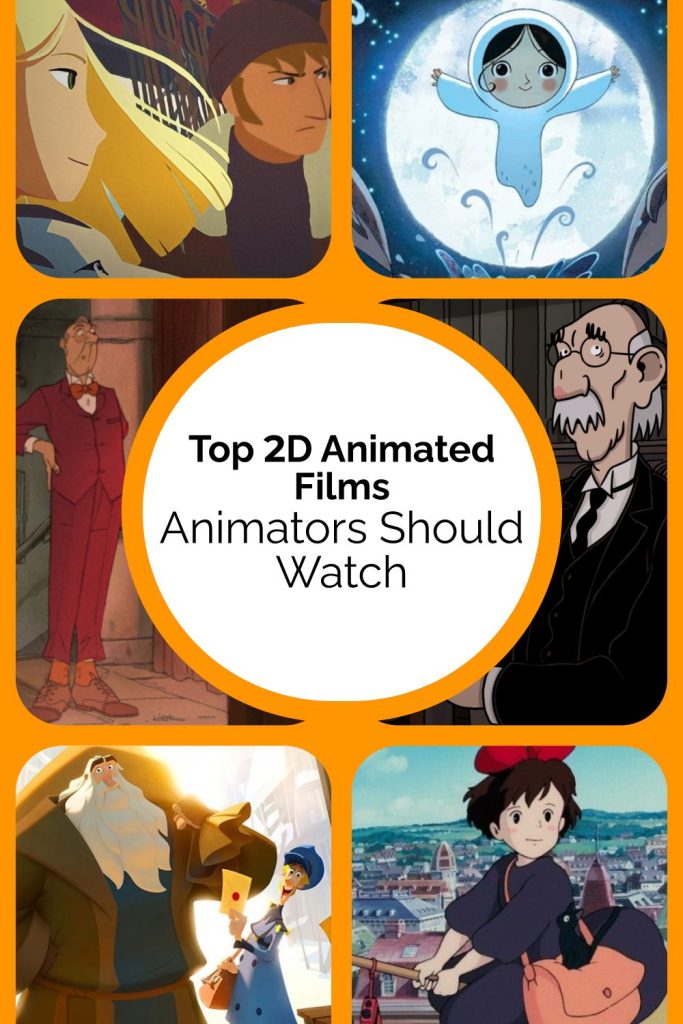Animated Films YOU Should Know
Animation is a magical realm where stories come to life and emotions become visible. In today’s world, saturated with technology and new forms of art, 2D animation maintains its uniqueness and captivates both professionals and enthusiasts. To stay relevant and inspired, animators must continually learn and develop their skills. In this article, we invite you on an incredible journey through a selection of iconic animated films that not only inspire but also unveil the secrets of craftsmanship that help create animated masterpieces. We invite you to dive into a world of captivating stories, unique techniques, and true artistry so that you can find your place in this enchanting industry. Read on and discover new horizons in 2D animation!
Kiki’s Journey: a freelancer’s tale
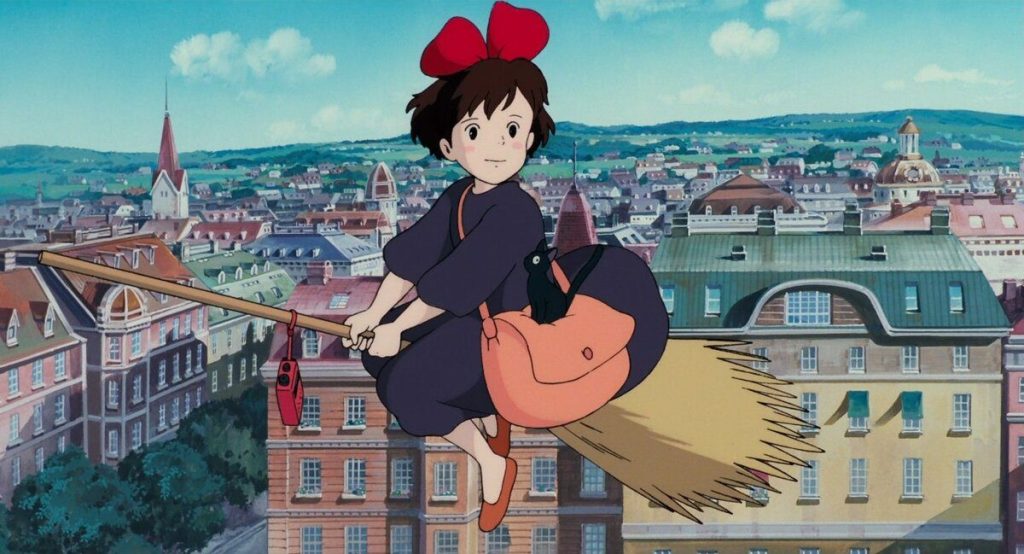
The life of a freelancer is full of risks: today there are orders, tomorrow there are none; you fall ill, but deadlines don’t change. Kiki, the heroine of Hayao Miyazaki’s film Kiki’s Delivery Service, faces similar challenges. At 13, she has to live independently among people, but her only magical skill is the ability to fly. By starting a delivery service, Kiki meets new people, makes friends, and, most importantly, finds herself. For freelancers, this cartoon is a source of inspiration and confidence. The coming-of-age story, grounded in simple human values, remains relevant even after 30 years.
Lessons from Miyazaki: mastering movement and weight

Animators can learn a lot from the works of Hayao Miyazaki and Studio Ghibli. The unique character design, attention to the environment, and the use of folkloric imagery and mythology create the distinct magic of Japanese animation. Special attention should be paid to how the authors convey the physical properties of objects in the frame. For example, in Kiki’s Delivery Service, the movement of air currents, the inertia of fabric, and the interaction with the weight of objects are masterfully depicted. These principles are also vividly demonstrated in films such as Spirited Away, Howl’s Moving Castle, and The Wind Rises. We discussed the transmission of a sense of weight in animation in one of our previous videos.
Klaus: a new take on animation techniques
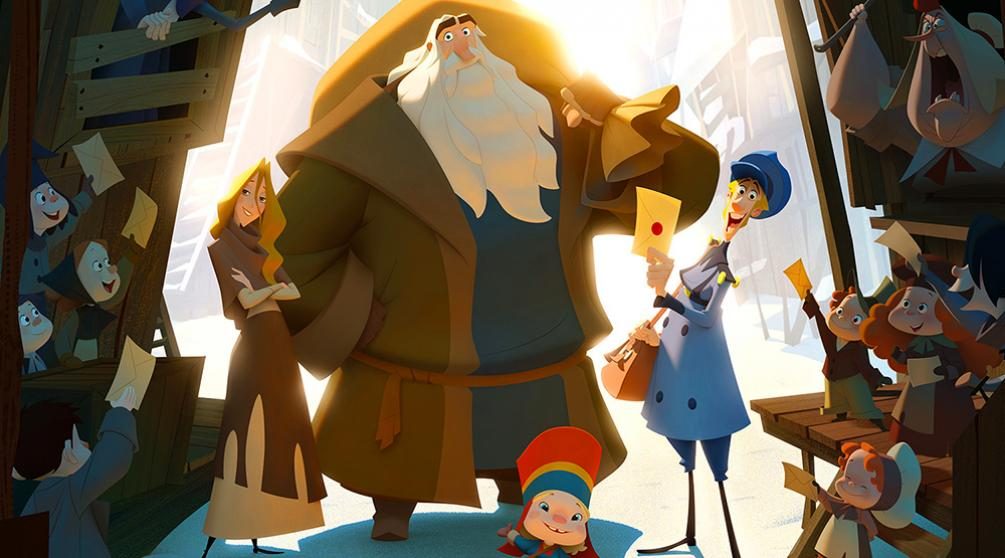
The animated film Klaus, released in 2019, has all the potential to become a classic alongside such New Year’s stories as Morozko and The Grinch. The creators offer a new perspective on the myth of Santa Claus: the plot follows Jasper, the son of the head of a postal company, who ends up in the harsh town of Smirensborg, where residents do not write letters and are hostile. However, a chance encounter with the woodsman Klaus sets off a chain of events that change the town for the better. The film received high praise from viewers and critics, but many were intrigued by the technique used for the animation.
Klaus is a classic 2D animated film enhanced by advanced digital techniques. The character animation was created entirely in 2D. The film’s standout feature is the unique volumetric lighting technology, developed and patented by the French company Les Films du Poisson Rouge. This innovative approach gave flat objects the illusion of volume, significantly enriching the film’s visual style. Who knows, perhaps in the future this technology will become standard, and the study of volumetric lighting will be included in animation school programs.
The Illusionist: the art of maintaining magic
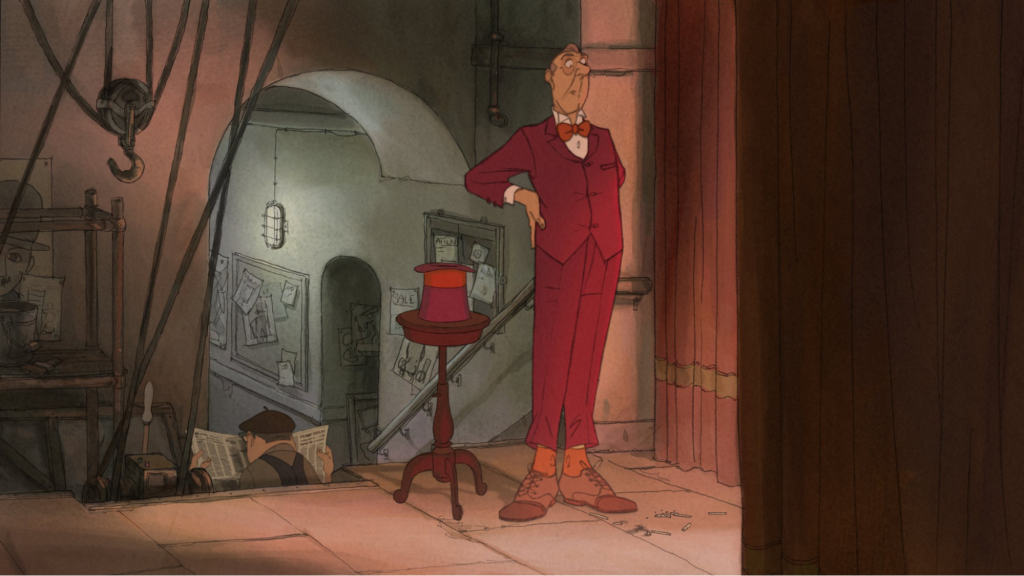
The animated film The Illusionist tells a touching story about a magician who continues to wander through remote places where people still believe in magic. In one Scottish village, he meets a girl who mistakes him for a real wizard and sets off on a journey with him. However, with each new performance, fewer people attend his shows, and the illusionist is once again forced to search for a new stage. This film is a melancholic tale of how modern technology displaces old magic and how difficult it is to maintain the illusion in a changing world.
Although the film’s animation is executed in a realistic style, it plays a key role in conveying the art of illusion. When the illusionist performs his tricks, the audience doesn’t see how he hides objects or pulls a garland from his mouth – everything is concealed behind his smooth, precise movements. The simplicity and calmness of his performances contrast with the bright, noisy modern world. To the girl, he remains a magician, but the audience understands that behind every miracle lies hard work. To 2D animators, the illusionist symbolizes an old magic that no longer fits into modernity.
April and the Extraordinary World: a retro-futuristic journey
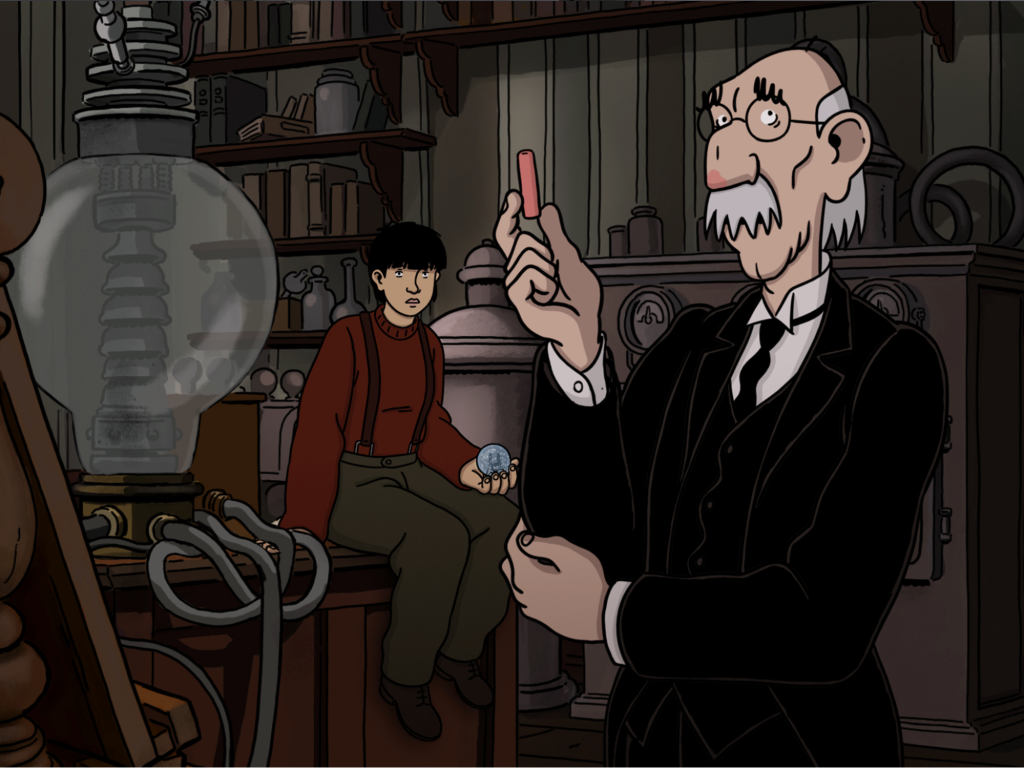
If you enjoy the fantastic stories of Jules Verne, the animated film April and the Extraordinary World is sure to appeal to you. In an alternative reality of the mid-20th century, people still live in a world of steam machines; electricity is unknown, and smoke and soot from coal fill the air. Avril, the daughter of chemists whose family disappeared while creating an elixir of immortality, completes their work years later. She must uncover the mystery of the scientists’ disappearance and prevent a world war. The film creates a unique atmosphere of retro-futurism, where the gray industrial world contrasts with an underground realm of high technology and nature governed by intelligent lizards and great scientists.
The animation of the film masterfully conveys the details of an alternative world – from trembling steam machines to creaking, fragrant costumes. The world lives its own life, filled with soot, sparks, and black rain, contrasted with serene moments, like the flight of dandelions. Attention to detail allows animators to create a believable environment while retaining the magic of fantasy, which is so close to the works of Jules Verne.
Song of the Sea: weaving Irish mythology into animation
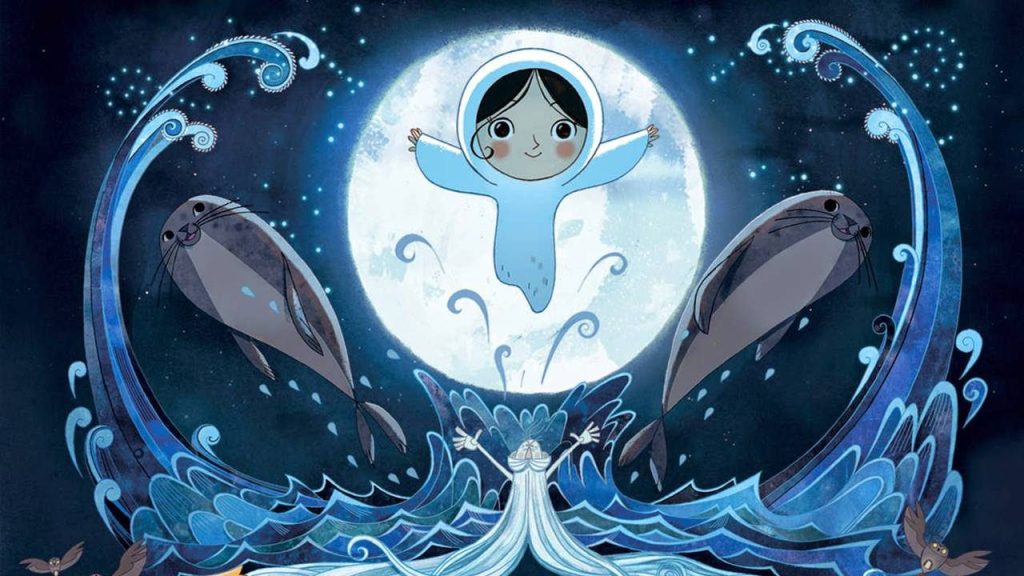
Song of the Sea captivates with its atmosphere steeped in Irish mythology, telling the story of the selkies – magical beings that can transform into seals. The main characters, Ben and his sister Saoirse, live in a lighthouse, but after moving in with their grandmother, they must return home before the end of the holiday, or Saoirse will die. Along the way, they encounter ancient wizards, magical creatures, and dive into a world of ancient legends. The film impresses with its deep exploration of Irish myths, where every element, from character design to environment, harmoniously blends with tradition – ancient elders, stone statues with patterns, malevolent owls, and the witch Macha.
The film’s visual style also plays a key role: the rounded shapes of the main characters symbolize safety, contrasting with the sharp and cold images of villains and their surroundings. The lighthouse and magical places are depicted as warm and smooth, unlike the cold, angular urban spaces. It is especially interesting to observe how the images of characters from the real world are transferred into the magical realm: the children’s father becomes a weeping giant, and the grandmother turns into the witch Macha. This technique leaves the viewer space for reflection on the connection between the world of magic and reality.
Ernest and Celestine: a heartfelt friendship
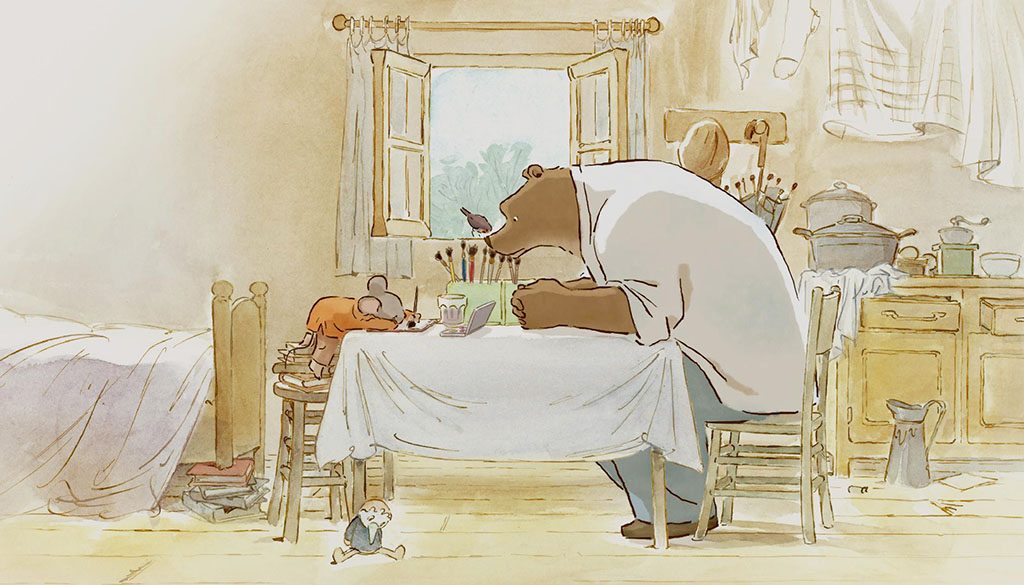
Ernest and Celestine: Adventures of a Mouse and a Bear stands out with its unique visual style, created manually using watercolor and classic 2D animation. This artistic approach perfectly aligns with the simple yet touching story of friendship between two anthropomorphic animals from different worlds. Despite the enmity between mice and bears, Ernest and Celestine find a common language and, hiding from the police, become true friends. This world is an excellent illustration of the personification of animals, where the characteristics of each species are reflected in their environment: for mice, everything is related to their incisors, while for bears, pastry and dental shops prevail.
The handwork with watercolor adds a special charm to the film. Each frame requires incredible precision, as even the slightest mistake would force animators to redraw the scene from scratch. However, this attention to detail and painstaking effort allowed for the creation of a cohesive, vibrant world that feels natural to the viewer. The result is a bright and heartfelt story that can touch the hearts of the entire family.
A Long Way North: an Arctic adventure

We conclude our review with the unusual animated film A Long Way North. This story takes us back to the era of imperial Russia and follows 16-year-old Sasha, a Petersburg aristocrat who sets off to search for her grandfather’s missing expedition in the waters of the Arctic Ocean. Despite opposition from envious individuals, she decides to complete his mission. Her adventure begins with a daring escape from home, working in a tavern, and deception by the crew of a fishing vessel. Will Sasha be able to overcome the challenges and find her grandfather? The answer awaits in the film.
The visual style of the film stands out with the use of pastel colors for key frame fills, emphasizing the contrast between St. Petersburg, Arkhangelsk, and the endless expanses of the Arctic. Inspired by the works of Russian artists from the 19th century, the film conveys a sense of grandeur and vastness in every frame. The simple yet expressive animation enhances the atmosphere, making the film a unique work of art, where each scene can be compared to a painted canvas.
Watching these cartoons will not only broaden your horizons as an animator but also inspire you to create your own unique stories. Each of them offers something special, whether it’s the mastery of movement or a deep dive into mythology.
If you want to deepen your knowledge and skills in 2D animation, we invite you to the «Basics of 2D Animation» course at Animation Club School. Our experienced instructors will help you master the key principles of animation and create your first works. Enroll in the course today and discover the world of animation!
